Have you ever wanted to create beautiful, handmade items but felt overwhelmed by where to start? No need to fear, because this guide to starting crochet will answer all your questions and queries! Crochet might be the perfect craft for you, but the thought of learning can seem daunting. You may worry about choosing the right tools, decoding patterns, or mastering basic stitches.
Imagine struggling with tangled yarn, uneven stitches, and projects that never quite look like the picture. The frustration of not knowing how to fix mistakes or the disappointment of giving up on a half-finished project can be disheartening. You might feel like you’re wasting time and money on a hobby you can’t seem to grasp.
But don’t let these fears hold you back! This ultimate guide is here to transform your crochet journey from novice to confident crafter. We’ll walk you through everything you need to know, from selecting your first hook to completing your first project. You’ll learn essential techniques, troubleshoot common issues, and discover tips to make your crochet experience enjoyable and rewarding.
Ready to unlock your creative potential and join a vibrant community of crocheters? Let’s dive in and start your crochet adventure together!
Table of Contents
What Is Crochet and Why Should You Start?
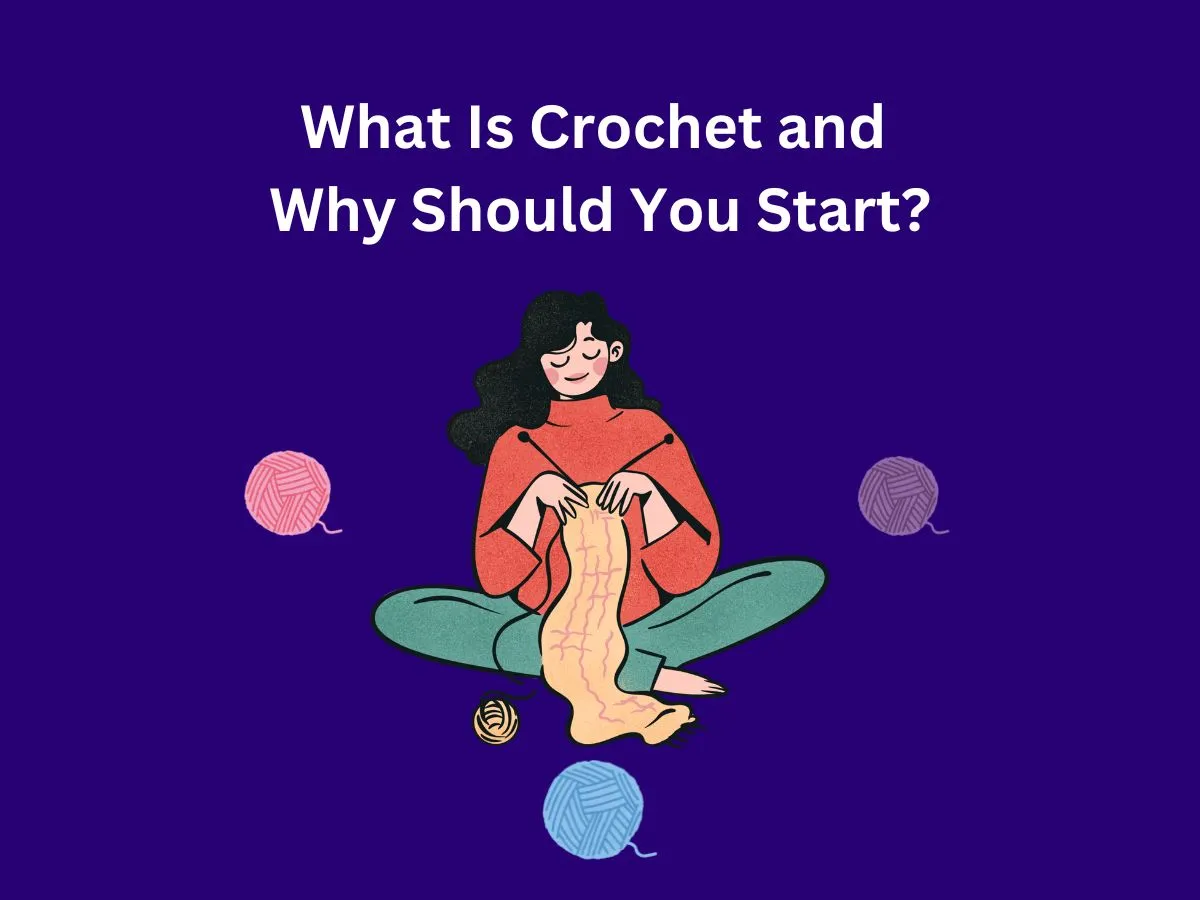
Crochet is a craft that uses a hook to create fabric from yarn or thread. It’s a versatile hobby that allows you to make everything from cozy blankets to stylish accessories. Crochet is easy to learn and can be done almost anywhere, making it a perfect pastime for people of all ages.
One of the best things about crochet is how it sparks creativity. You can choose from countless patterns or design your own unique pieces. As you work with different colors and textures, you’ll find yourself coming up with new ideas and combinations. Crochet also offers a great way to relax and unwind after a long day. The repetitive motions can be soothing, helping to reduce stress and improve focus. If you’re curious about the history of crochet, check out this article on the origins of crochet.
Joining the crochet community is another fantastic benefit. Whether you connect with other crafters online or join a local group, you’ll find a welcoming bunch of people who share your passion. These connections can lead to friendships, skill-sharing, and inspiration for new projects. Plus, there’s nothing quite like the satisfaction of creating something beautiful with your own hands and sharing it with others.
Essential Tools and Materials for Beginners Starting Crochet
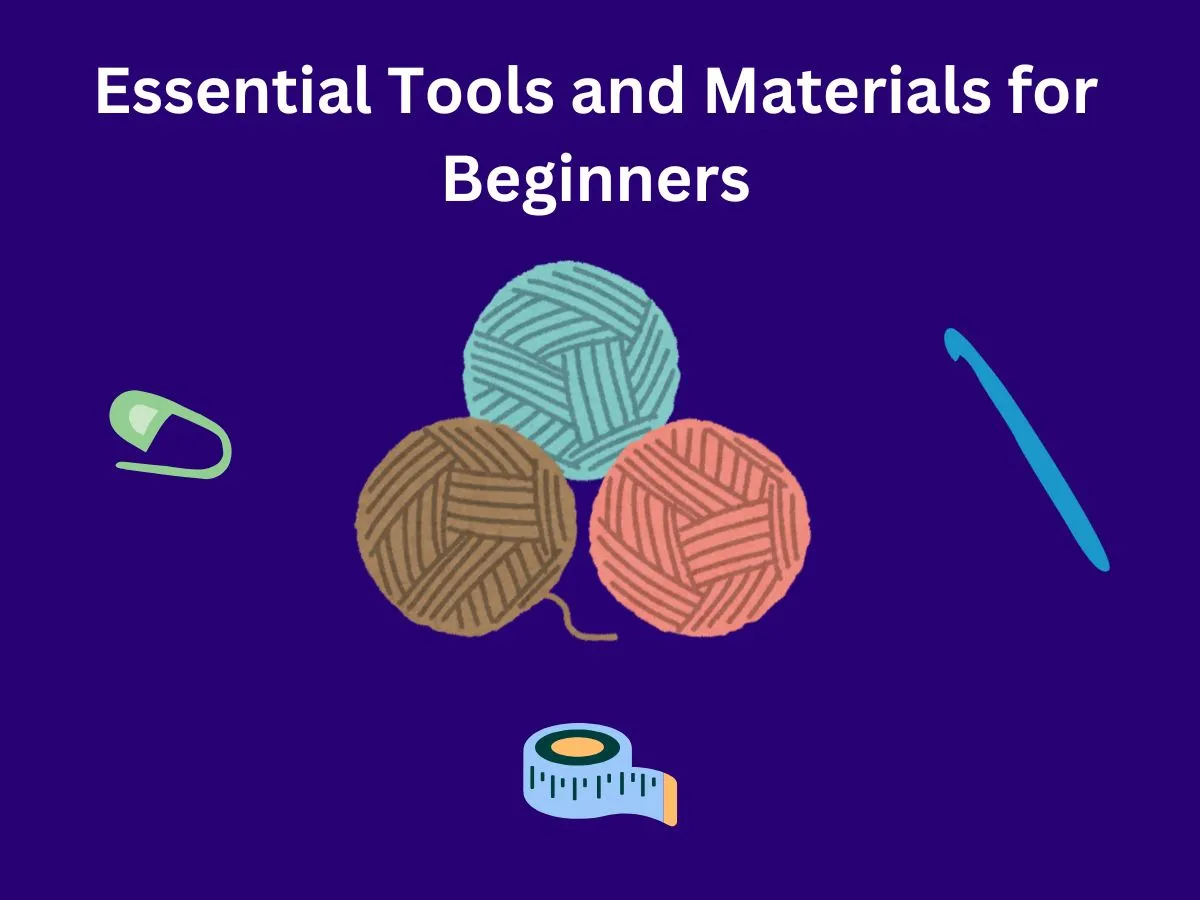
To start crocheting, you only need a few basic supplies. The most important are crochet hooks and yarn. Crochet hooks come in different sizes and materials. For beginners, it’s best to start with a medium-sized aluminum hook, like a 5mm (H/8) hook. Aluminum hooks are smooth, making it easier for the yarn to glide as you work.
When it comes to yarn, choose a medium-weight yarn in a light color. Brands like Lion Brand Wool-Ease or Red Heart Super Saver are great for beginners. Light colors make it easier to see your stitches as you work. Avoid dark or textured yarns until you’ve mastered the basics. Other helpful tools include scissors for cutting yarn, stitch markers to keep track of your place, and a tapestry needle for weaving in ends.
For your first project, keep it simple. A basic scarf or dishcloth is perfect for practicing your stitches. Choose a pattern designed for beginners that uses simple stitches like single crochet. Decoding Crochet Patterns: A Beginner’s Guide explains how to read patterns and pick the right one. Remember, it’s okay to make mistakes – that’s how you learn! With these basic tools and a bit of patience, you’ll be on your way to creating beautiful crochet projects in no time. If you’d like, read this blog to gather the essential tools you’ll need
Learning the Basics: Slip Knots and Chain Stitches
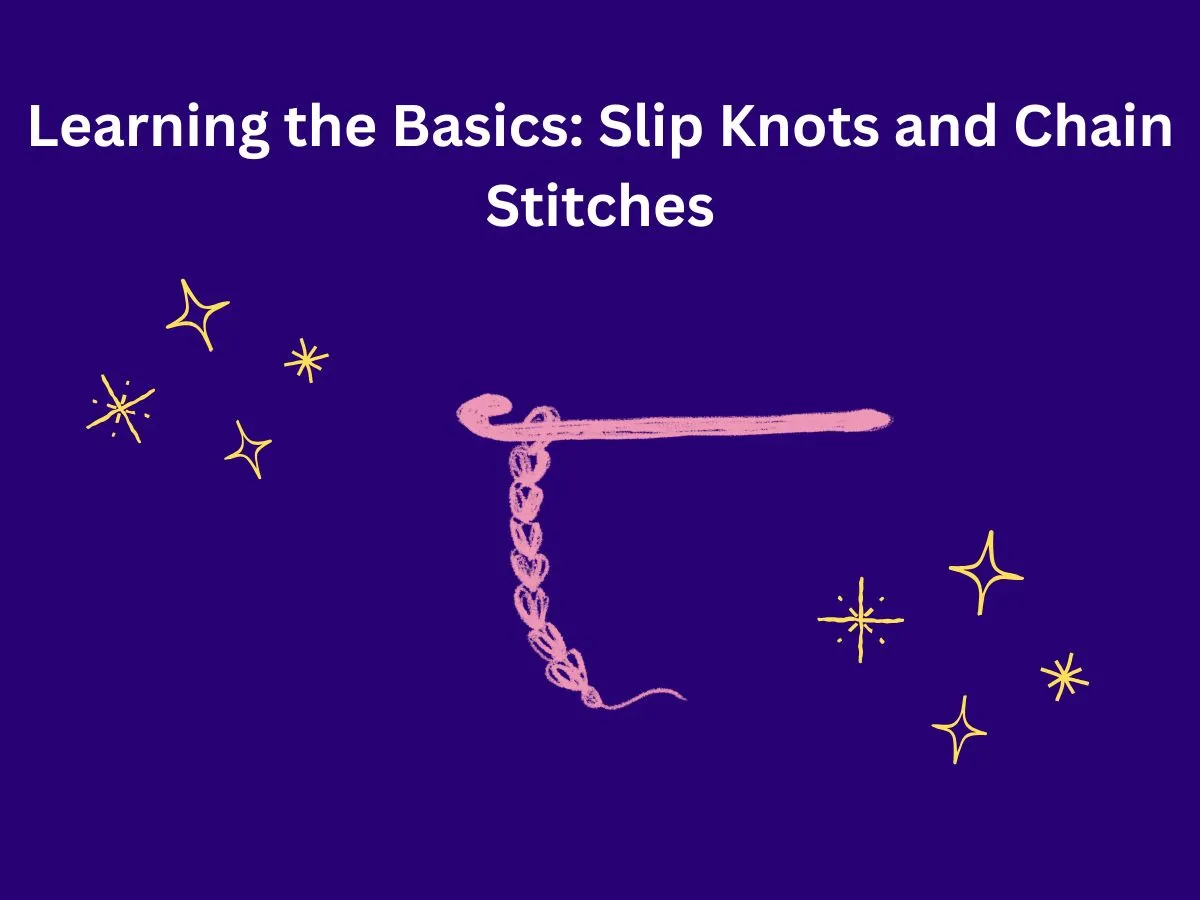
The slip knot is the starting point for almost every crochet project. To make one, create a loop with your yarn, leaving a tail about 6 inches long. Insert your hook into the loop, grab the working yarn (the yarn attached to the ball), and pull it through the loop. Tighten gently, and you’ve made your first slip knot!
Once you’ve mastered the slip knot, it’s time to learn the chain stitch. This forms the foundation for most crochet projects. To make a chain stitch, yarn over (wrap the yarn around your hook from back to front), and pull it through the loop on your hook. Repeat this process to create a chain of the desired length. Each “V” shape in your chain counts as one stitch.
The chain is crucial because it sets the width or length of your project. For example, if you’re making a scarf, your starting chain determines how wide it will be. Practice making chains of different lengths to get comfortable with the motion. Remember to keep your tension consistent – not too tight or too loose. With these basic skills, you’re ready to move on to more complex stitches and start your first project!
Mastering Your First Stitch: The Single Crochet
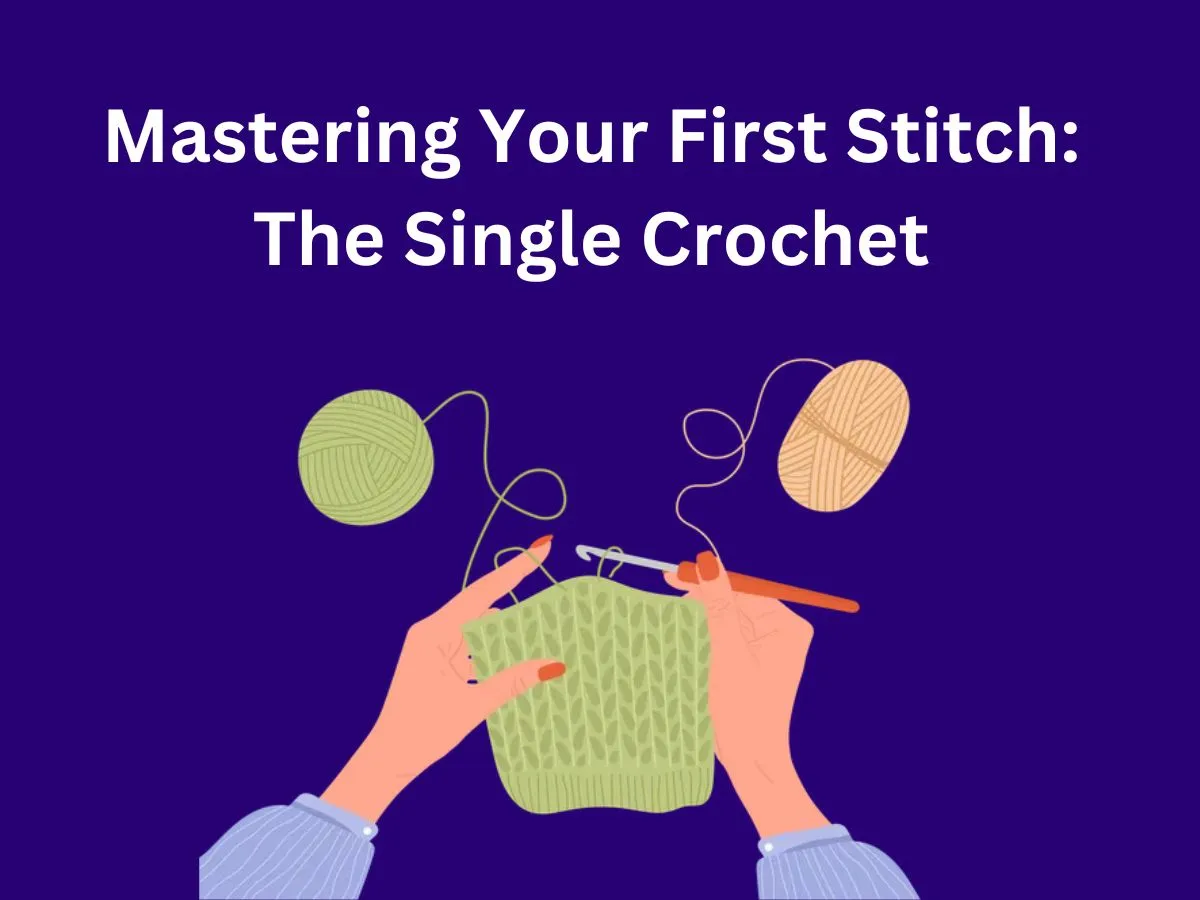
The single crochet (SC) is the most basic and common crochet stitch. It’s a great starting point for beginners. To make a single crochet, first insert your hook into the next stitch. Then, yarn over (wrap the yarn around your hook) and pull up a loop. You’ll now have two loops on your hook. Yarn over again and pull through both loops. That’s it – you’ve made a single crochet!
Practice is key to mastering this stitch. Start by making a small chain, then work single crochets into each chain stitch. As you practice, focus on keeping your tension even. This means pulling the yarn through with consistent tightness. Don’t worry if your first attempts look a bit wonky – that’s normal!
To build confidence, try making small projects using only single crochet. A simple dishcloth or scarf is perfect for this. Count your stitches as you go to make sure you’re not accidentally adding or dropping any. Remember, the ‘V’ shape at the top of each stitch is where you’ll insert your hook for the next row. With time and practice, single crochet will become second nature to you.
Holding Your Hook and Yarn: Finding Your Comfort Zone
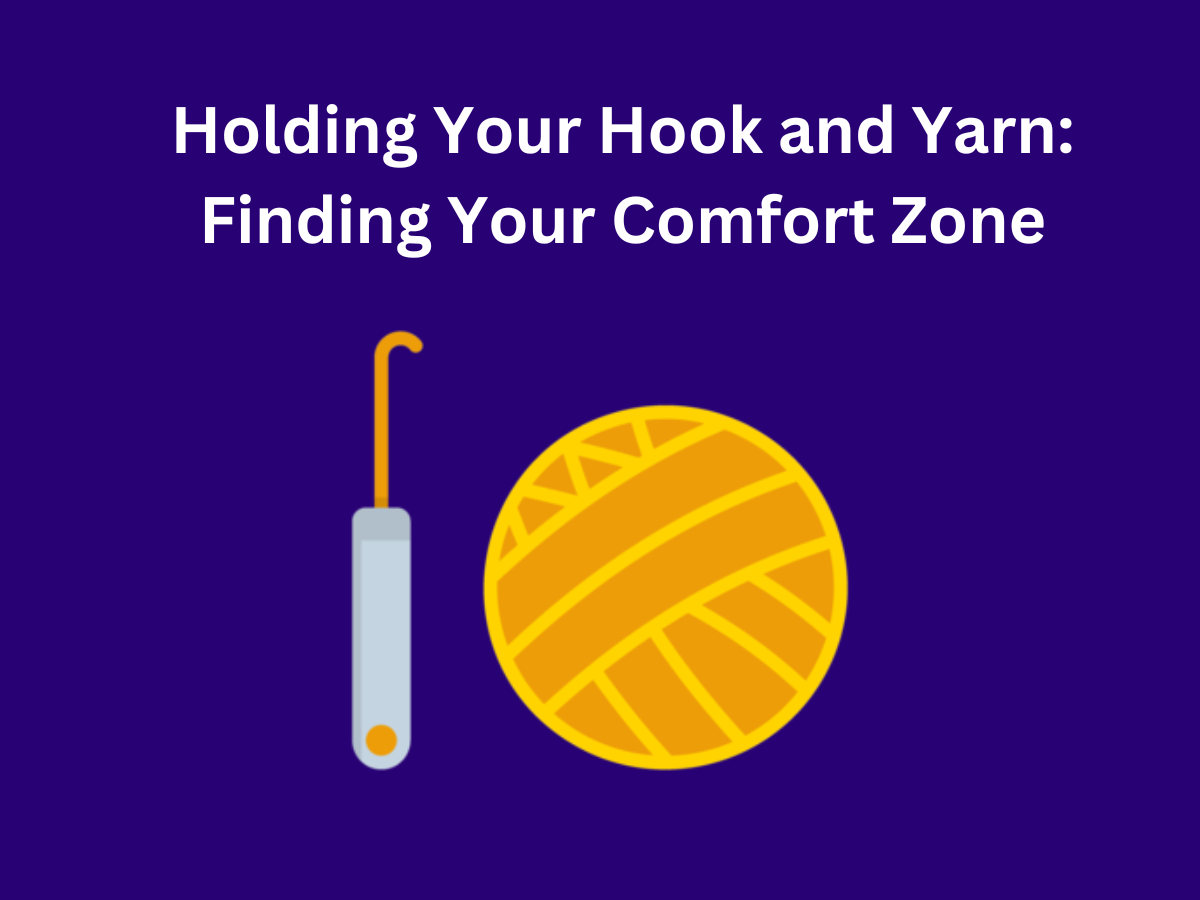
There’s no one “right” way to hold your crochet hook and yarn. The most important thing is to find a method that feels comfortable for you. Some crocheters hold their hook like a pencil, while others prefer a knife grip. Experiment with different holds to see what works best for you. For the yarn, try wrapping it around your fingers in different ways to control tension.
Maintaining good tension is crucial for even stitches. Your yarn should flow smoothly as you work, not too tight or too loose. If your stitches are too tight, try relaxing your grip on the yarn. If they’re too loose, wrap the yarn around one more finger for added control. Remember, it’s okay to adjust your hold as you go – comfort is key!
To avoid hand strain, take regular breaks and stretch your hands and wrists. If you find yourself tensing up, pause and shake out your hands. Some crocheters find that ergonomic hooks help reduce strain. Whatever method you choose, the goal is to crochet comfortably for longer periods. With practice, you’ll develop muscle memory and find your perfect holding technique.
Common Beginner Mistakes and How to Avoid Them
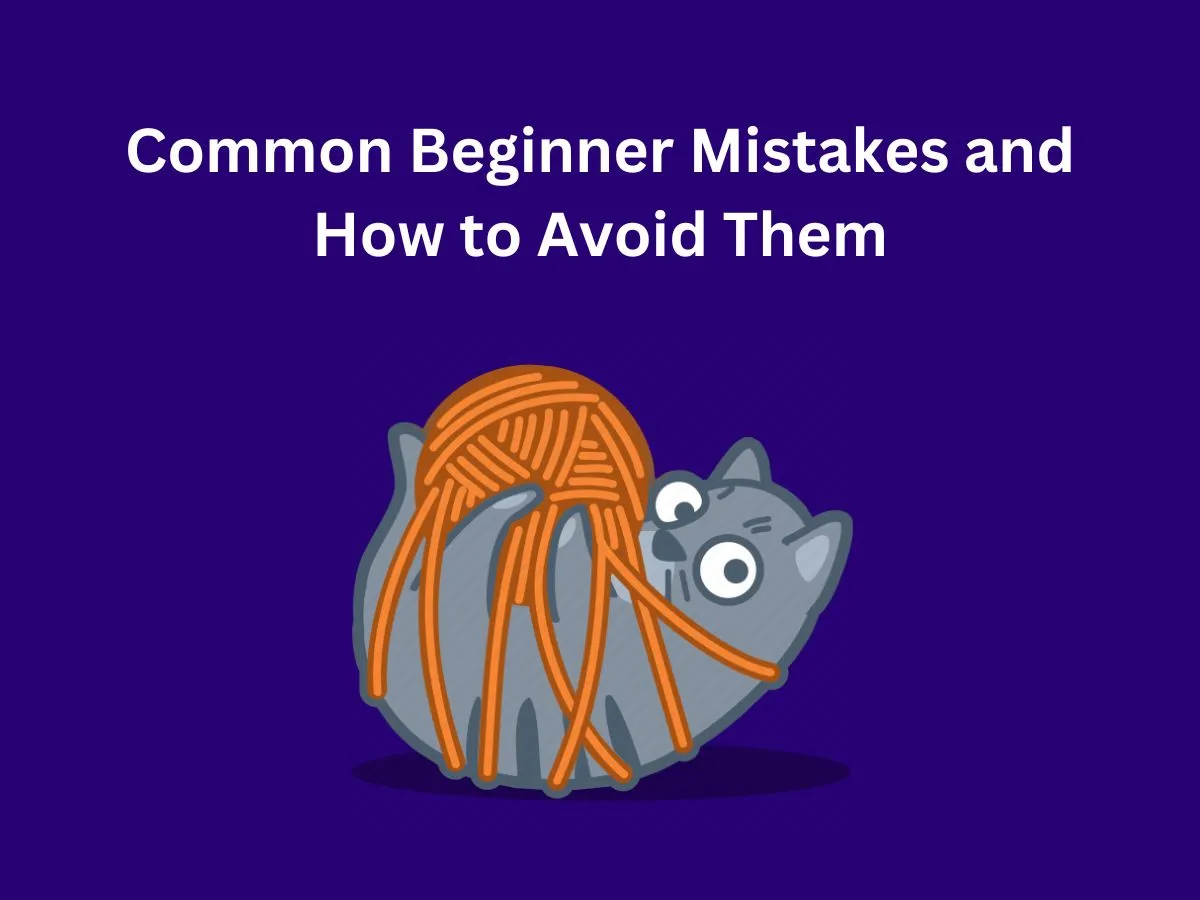
As a beginner, it’s normal to make mistakes. One common issue is uneven stitches. This often happens when your tension varies. To fix this, focus on maintaining consistent yarn tension as you work. Another frequent mistake is missing stitches, especially the last stitch of a row. Always count your stitches to make sure you have the right number.
Tight chains can make your work difficult. If your chain is too tight, try making it with a larger hook, then switch back to your project hook. Some crocheters accidentally work into only one loop of a stitch instead of both. Remember to insert your hook under both loops unless your pattern says otherwise. It’s also easy to forget to turn your work at the end of a row, which can lead to confusion.
Don’t get discouraged by mistakes – they’re part of learning! If you notice an error, it’s usually best to undo your work (called “frogging”) and fix it. Keep in mind that even experienced crocheters make mistakes sometimes. The more you practice, the better you’ll get at spotting and fixing errors. Embrace the learning process and remember that each mistake teaches you something new about crochet.
Easy Beginner Projects to Build Confidence

Starting with small, simple projects is the best way to build your crochet skills and confidence. Dishcloths are perfect for beginners because they’re quick to make and still useful even if they’re not perfect. Scarves are another great option, as they let you practice your stitches in long rows. Coasters are small and fun to make, allowing you to try different patterns without a big time commitment.
One easy project to try is a crochet can cozy. It’s made with cotton yarn and uses a simple stitch pattern. You can make it to fit standard or slim-style cans. Another quick project is a hair scrunchie, which is perfect for gifts or to sell at craft fairs. You can make it with regular yarn or try velvet yarn for a different texture.
As you complete these small projects, you’ll gain confidence in your skills. Each finished item is a small win that can motivate you to try bigger projects. You might start with a dishcloth, then move on to a scarf, and before you know it, you’ll be ready to tackle a blanket or even a sweater. Remember, every expert crocheter started as a beginner, and these small projects are the stepping stones to bigger and more complex creations.
Staying Motivated: Joining the Crochet Community
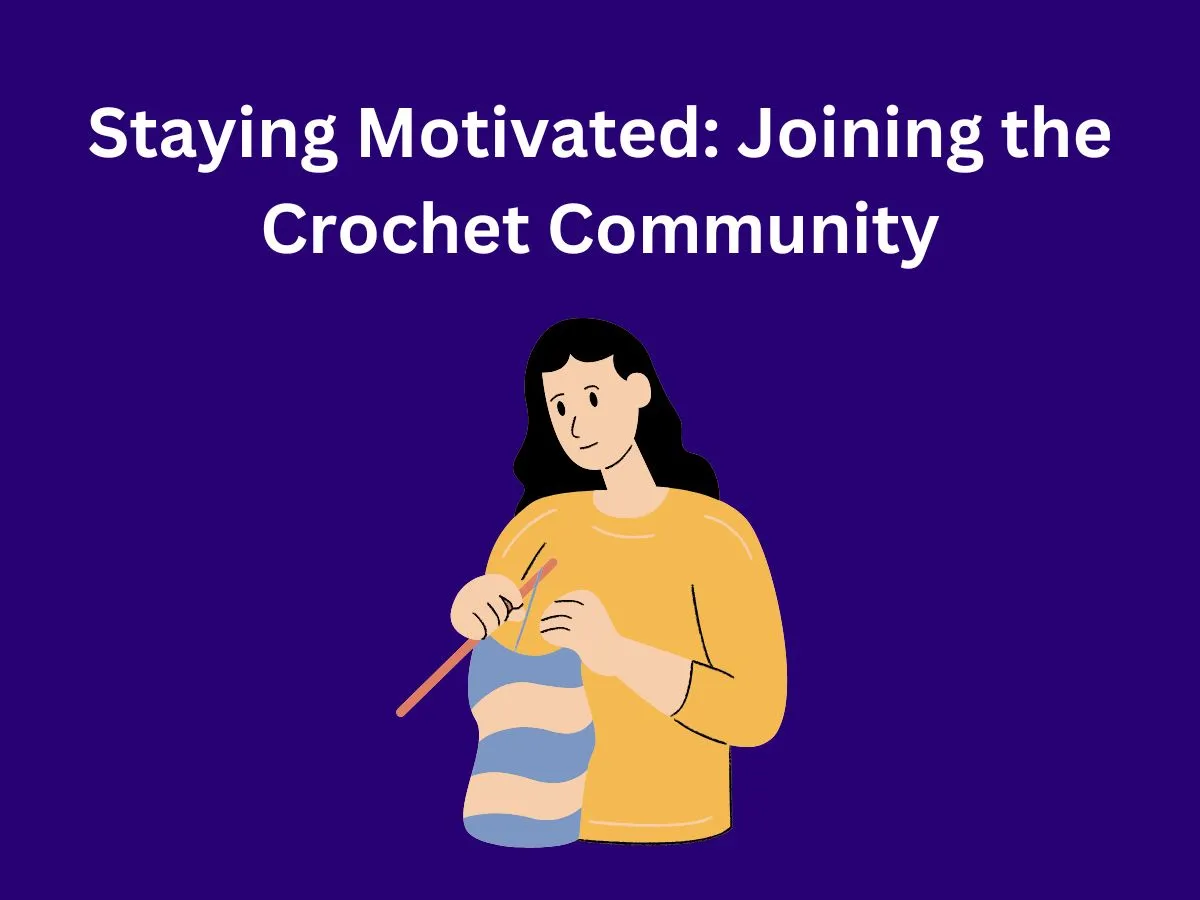
Connecting with other crocheters can greatly enhance your crochet journey. Whether online or in person, these communities offer support, inspiration, and a sense of belonging. You can share your projects, ask for help when you’re stuck, and celebrate your achievements with people who understand your passion.
Online fiber art communities are especially valuable, as they connect you with crocheters from all over the world. You can find endless inspiration, learn new techniques through video tutorials, and participate in discussions about all things crochet. Social media groups, forums, and dedicated crafting platforms are great places to start. Local groups are also wonderful for face-to-face interactions. You might find crochet meetups, workshops, or classes in your area where you can learn and socialize with fellow crocheters.
Being part of a crochet community has many benefits. It can improve your mental health and well-being, as crafting with others can be relaxing and fun. You’ll have opportunities to develop your skills by learning from more experienced crocheters. Plus, you’ll be exposed to diverse crochet styles and techniques from different cultures, broadening your crochet horizons. Remember, crochet is not just a solitary hobby – it’s a way to build connections and be part of a supportive, creative community.
Next Steps: Expanding Your Skills Beyond the Basics

Once you’ve mastered the basics, a whole world of crochet possibilities opens up. You can start exploring more advanced stitches and techniques to add to your crochet toolkit. For example, you might try the herringbone stitch to make a sophisticated cowl, or learn how to crochet in the round to make hats and amigurumi (stuffed toys).
Don’t be afraid to experiment with different patterns and create your own unique pieces. You could try making a textured pillow cover, a pair of fingerless gloves, or even your first sweater. As you gain confidence, you can play with different yarn types and colors to create your own style. Remember, every complex project is just a combination of basic stitches you already know.
Keep challenging yourself with new projects and techniques. You might want to learn how to read more complex patterns or even design your own. The crochet journey never really ends – there’s always something new to learn or create. And don’t forget, it’s okay to make mistakes. They’re part of the learning process and often lead to unexpected creative discoveries. Keep hooking, keep learning, and most importantly, keep enjoying the wonderful world of crochet!
Final Thoughts
Now you have the tools to begin your amazing crochet adventure! Put these tips into action, and you’ll be crafting beautiful items before you know it. Remember that practice makes perfect, so keep trying even if it seems hard at first. Every crocheter starts somewhere, and you’re well on your way to becoming a confident crafter.
Don’t let any worries stop you. Start small, stay patient, and most of all, have fun! Your creativity is waiting to be unleashed, and crochet is the perfect way to do it. If you need more help or have any questions, feel free to reach out to me at info@madeehamedia.com. I’m happy to help you on your journey!
Frequently Asked Questions
Q1: What’s the best yarn for beginners?
A: Medium-weight yarn in a light color is easiest to work with when you’re starting out.
Q2: What size crochet hook should I use?
A: A 5mm (H/8) aluminum hook is a good size for beginners.
Q3: How do I make a slip knot?
A: Create a loop, insert your hook, pull the yarn through, and tighten.
Q4: What’s the single crochet stitch?
A: Insert hook, yarn over, pull up a loop, yarn over, and pull through both loops.
Q5: How do I avoid uneven stitches?
A: Keep your tension consistent by pulling the yarn through with even tightness.
Q6: What should I do if I make a mistake?
A: It’s okay to undo your work (frog it) and fix the mistake.
Q7: What are some easy projects for beginners?
A: Dishcloths, scarves, and coasters are great starting projects.
Q8: Where can I find crochet patterns?
A: Online forums, crafting websites, and social media groups are great places to find patterns.
Q10: What do I do after mastering the basic stitches?
A: Try more advanced stitches and techniques, and experiment with different patterns.